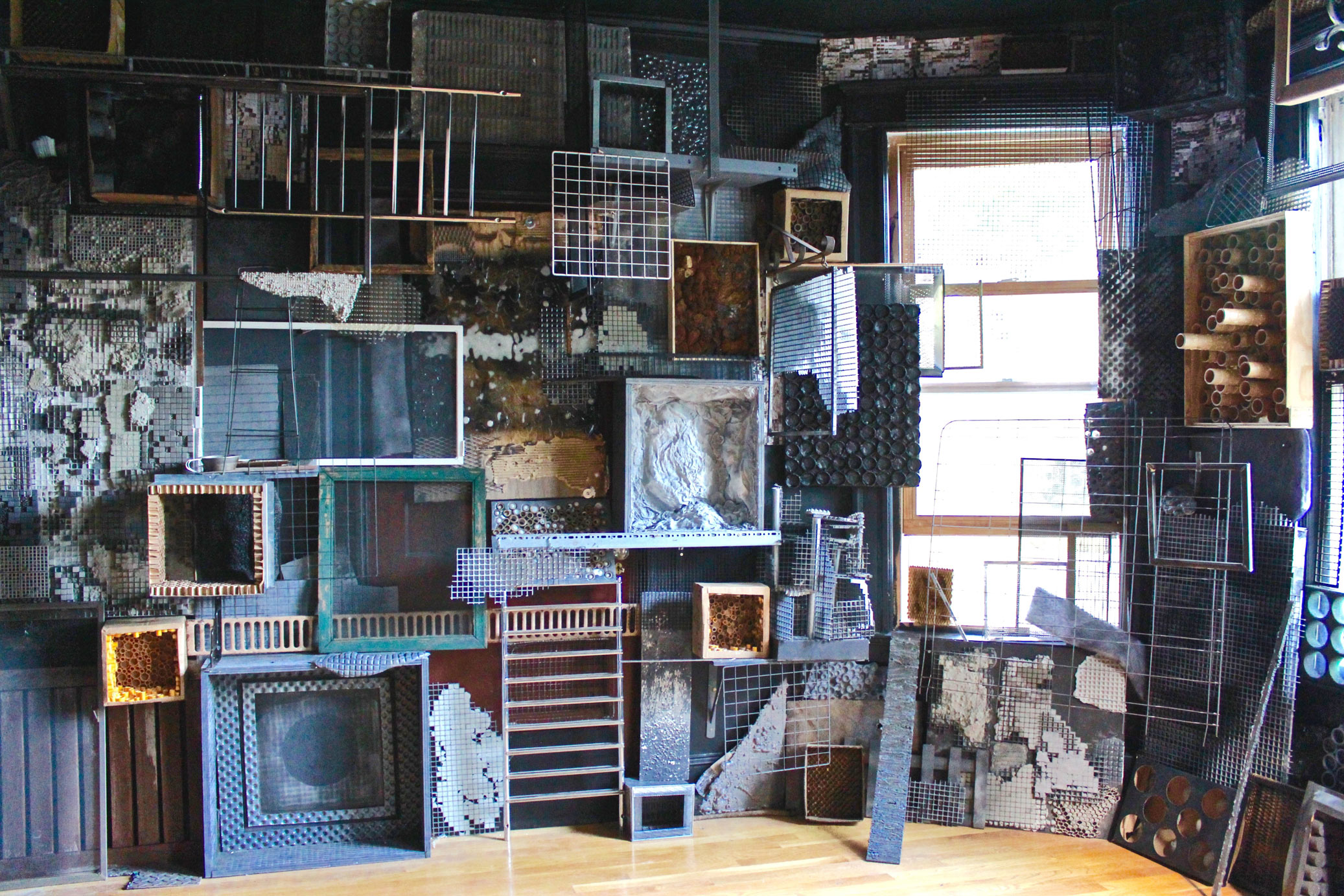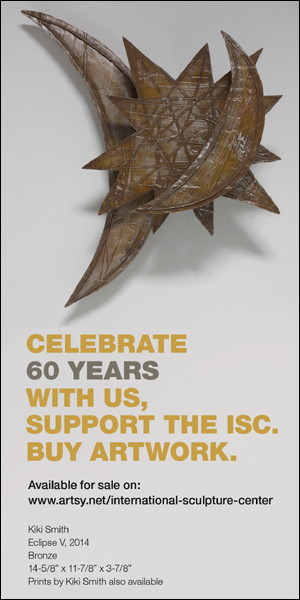Newton, Massachusetts
When Christopher and Joelle Zakak purchased a late 19th-century Queen Anne Victorian house in Newton, Massachusetts, they intended to demolish the aged relic and rebuild on the site. Local zoning regulations, however, required that they wait one year. Being artists, as well as enterprising developers, they began using the empty rooms as studios. From that creative seed, the Webster Court Project was born.
The Zakaks, in consultation with Boston Museum School professor Mark Cooper, invited 20 Museum School graduate students and emerging Boston artists to convert the structure into an “art house.” The loose collective transformed rooms, hallways, bathrooms, and porches into intriguing and sometimes magical installations. Their work celebrated the history of the house while simultaneously challenging concepts of home, environment, and identity.
In How they live, Krystle Brown took the mandate to heart, bringing objects gathered from her defunct family home in North Chelmsford. Her roots in working-class America were reflected in an installation that combined tchotchkes with a pile of worn stuffed animals, a hand-crocheted throw on an old chair, and a line-up of 45 records on the mantelpiece of a once gracious room. For her, “houses represent the uneasy intersections of class division, capitalism, and the rituals of grief and loss through the lens of family structure.” Brown’s forceful autobiographical narrative, handwritten on the door, made the installation particularly powerful.
Sofia Plater, another artist-collector, titled her installation Cultch, an old New England term used to describe a pile of junk. She filled her room with dense grids, empty frames, and constructions, often embedded with end-cuts of pipes, old grates, and plaster. Her structures, layered with hundreds of different patterns and textures, cascaded from ceiling to floor, threatening to crash down at any moment. A consummate sculptor, Plater carefully engineered the environment to arouse anxiety, likening it to an impression of a post-apocalyptic world brought about by humans.
Across the hall, Sam Belisle’s Punch List featured life-size portraits of workmen on ladders painted directly on the walls. Their tired and patient faces bore the look of physical laborers who create the elegant spaces that welcome more wealthy individuals. In Lunch Table, a gathering of ladders, buckets, and paint cans formed a low “table” in the center of the room, topped by McDonald’s fast food containers. Belisle talks of cultural objects, like ladders, as having an almost religious significance in working-class life. In this context, Lunch Table could broadly be interpreted as a type of altar, and the eating of lunch together as a kind of communion.
Cal Rice’s General Correspondence created a dense environment at once disconcerting and elegant. A central tower formed of open drawers, a clock, old tech equipment, a lamp, and additional detritus scrambled the usual household order. Disparate objects were stacked together on shelves, unified by a painterly celadon tone. Drawing heavily on personal history, Rice attempted to invoke the kind of uncanny nostalgia that can lead the viewer into a personal Wunderkammer of memory.
(Re)Generate, Evan Blackwell’s room filled with living trees and plants, brought to mind Walter De Maria’s New York Earth Room installation. Blackwell’s small green paradise incorporated foliage taken from around the property as a symbol of how time and nature have interwoven with the house itself. Underlying the visual enticement was a broader message about the intimate interrelationship of humanity and nature.
The entire Webster Court Project was like an unfolding mystery story—one never knew what to expect when turning a corner or climbing a stairway. In addition to the art itself, the show engaged the community with performances and participatory events. A truly original undertaking, this labor of love offered a fresh perspective on how to organize a truly open-ended art adventure.




